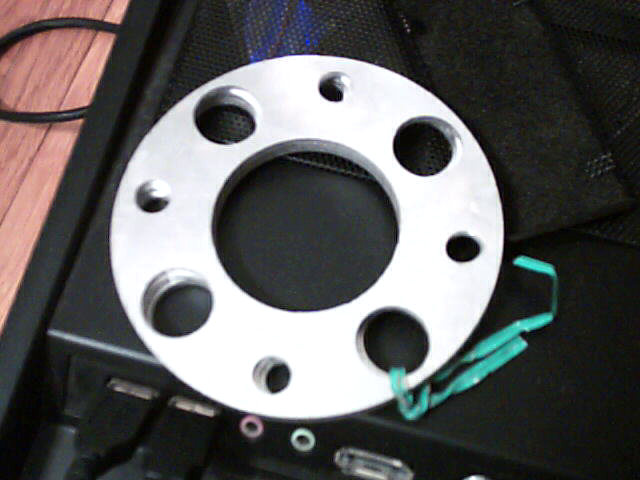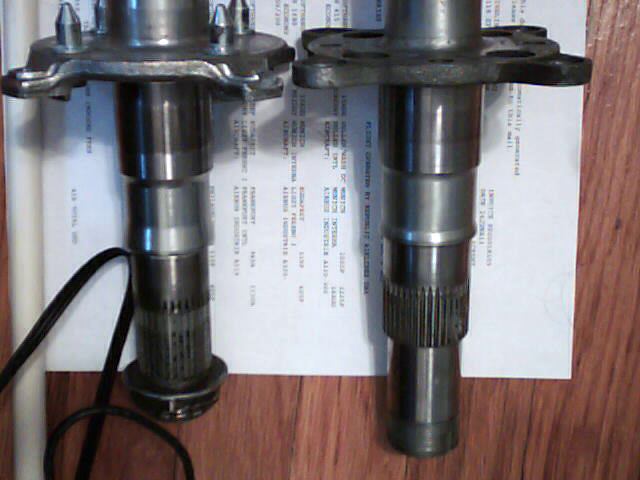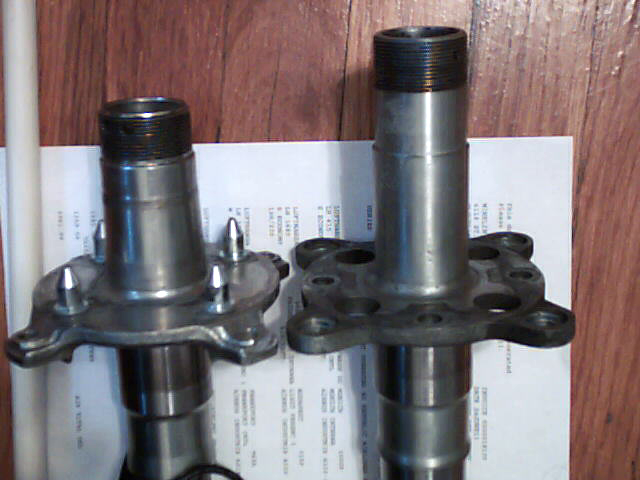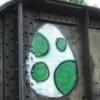-
Posts
2,751 -
Joined
-
Last visited
-
Days Won
14
Content Type
Forums
Profiles
Gallery
Blogs
Downloads
Events
Posts posted by YoshiHNS
-
-
If someone really wants that exhaust, the paint can always be removed.
-
I bet these guys in the farther corners of the world, working in "less than ideal" conditions, will never let a Honda "special tool" requirement from getting the job done!



-
-
I didn't see pricing, but here's their old kickstarter page.
http://www.kickstarter.com/projects/otherfab/the-othermill-custom-circuits-at-your-fingertips
I don't think I would want to do a whole lot of aluminum with that thing. It's more of a glorified router. Pretty cool though. A friend might be interested for making circuit boards.
-
Definitely a sweet sounding ride. I remember when I got to follow you through kentucky those many years ago.
-
I am planning an 848 rear rotor and caliper to go with the 848 rear wheel....
That would probably be the smarter sounding thing to do.
Have I checked that the 675 fits? No. I got it essentially for free with the Sato rearsets I bought for $100. I think that I will have to make a new brake caliper mount that has the same dimensions as the Triumph at the axle, and then whatever I need at the caliper end. Maybe I'll be able to get away with just machining some of the existing mount. The caliper mount is a part of how everything fits together on the axle, so we will see.
-

Opera plays the video fine. The link just sends you to their VFRD video page.
-
Over a year without an update.
Well, not much of an update, but here are some parts so you don't think I've completely abandoned this.

One more part to make. Think third week in October is my next free weekend. So hopefully I will have them finished by then. Already started making those parts a month ago, just need to finish.
Also, here are some pictures comparing an 848 spindle to the Triumph spindle.


You can see the triumph spindle (RIGHT) is way too long on the wheel side of things, but the Ducati is too different on the sprocket side.
-
Glad to hear. Enjoy the improved ride.
-
I'm not sure about the stability part. With more pressure your tires are going to feel different than before when you are in the process of leaning the bike over. As I said earlier, the ST feels sluggish putting it in a turn if the pressure is low. Difference in the tire profile and shape. It might make it more stable because the sidewall is able to do its job better now, if it does anything at all.
When I think corner stability, I think more of adjusting the suspension than adjusting tire pressure.
And indeed we shall see.
-
 1
1
-
-
The other thing to consider is that the tire's labeled maximum recommended pressure, which is typically 42 psi, is ideal for a bike loaded to it's maximum carrying weight , lets say 400 lbs. That's a rider, passenger, and full luggage.
How can this pressure also be ideal for a single rider, lets say 190 lbs with no luggage.
The simple answer is that it is not ideal.
I disagree, what you're describing is adjusted with the suspension set up. The only time I ride with a lower psi than 36/42 is in real cold weather, then I'll drop each tyre one pound.
The air inside the tyre is going to stay the same to hold the tyres shape no matter what the wt. is.
Well you'll have a smaller contact patch with a single light rider (at 42 psi) than with a fully loaded bike (at 42 psi). Dropping the pressure by 1 psi will not make any noticeable difference. Most pressure gauges are not even accurate or consistent within 1 psi
Doing some quick math. If 36/42 was only for fully loaded, so bike, passenger, rider, luggage, then everything should scale. Otherwise it wouldn't make any sense. Rough numbers, 550 for the bike, 180 for the rider, 140 for passenger, and 60 for luggage. 36/42 ideal pressure, since that is 'only' MAX pressure, and this is going to be our MAX load. If we scale it down where 0psi is for 0 weight (because a tire by itself holds it's shape just fine), then the psi for only bike and rider is 28/33. If you want to throw another wrench in there, you could consider the weight distribution, where the rear has more weight on it with the bike fully loaded at a static FoR. Then it would be closer to 30/30 psi. This doesn't seem to work out right.
Meanwhile, your rear shock is sitting there crying about how it was only supposed to hold up the bike and a 140lbs rider, and now you've tripled the load.
-
 1
1
-
-
The other thing to consider is that the tire's labeled maximum recommended pressure, which is typically 42 psi, is ideal for a bike loaded to it's maximum carrying weight , lets say 400 lbs. That's a rider, passenger, and full luggage.
How can this pressure also be ideal for a single rider, lets say 190 lbs with no luggage.
The simple answer is that it is not ideal.
I disagree, what you're describing is adjusted with the suspension set up. The only time I ride with a lower psi than 36/42 is in real cold weather, then I'll drop each tyre one pound.
The air inside the tyre is going to stay the same to hold the tyres shape no matter what the wt. is.
An interesting point. But I am going to side with Monk. When you have a passenger onboard, the suspension becomes the big weak spot when it comes to the handling of the bike.
-
 1
1
-
-
I really don't know where any of the hate is coming from. I really really don't.
Unless I'm just not reading anything right, I thought we were all pretty much saying that you shouldn't run track pressures on the street, and a little experimenting is fine and nothing catastrophic is going to happen, and adjusting for weather/temperatures is also important. I'm still going to tell people who are just getting into it to start at 36/42 and play around with it from there when they are comfortable, because I don't see why I would tell someone relatively new to run 6psi lower off the bat and never do anything else.
To the "common sense" point Mohawk brought up. It is a good point. Temperature swings will change your cold tire pressure. 5C to 30C would be a 4psi change. Which is why it is a very good idea (possibly even 'common sense'
 ) for people to regularly check your tire pressures. Right before you go out for a ride sounds like a really good time to check them too. Even if the temperatures don't change, the pressures can still change for whatever reason.
) for people to regularly check your tire pressures. Right before you go out for a ride sounds like a really good time to check them too. Even if the temperatures don't change, the pressures can still change for whatever reason. -
But the question remains, do you really need that additional grip. You yourself said that you ran 34/36, and bumped it up to 34/38 and didn't notice any change. What if you bumped it up to 34/40? Do you think that by doing that you're going to lose the rear end at every corner as if you are on ice? Or are you just putting more wear on the tires than necessary? No real good way to know how much grip you get or how much you need.
I don't want people thinking that you HAVE to run lower pressures 'FOR THE STREET'. Go ahead and experiment a bit, but a few psi lower is all you should need, if you find you need any drop at all. I found that a few psi for cold days is good on the VFR, normal on warm days, but the ST feels like a pig at even 3psi below factory.
-
I can understand that dropping the psi a bit MAY give you more grip. I understand that it will help the tire warm up faster and stay warmer, which is probably good if the road is cold (<50F).
But how much more grip are you getting for running it that much lower, and do you really need that extra bit of grip? I've scrapped a few pegs through corners on 36/42 no problem. Not saying I was going fast, just that the bike was leaned over a bit, and everything was fine. Unless you are going at track pace on the road, I really can't see a good reason to run anything lower than 34/40 on a normal basis, if not 36/42.
Remember, with modern tires, it's not just the rubber on the outside. A lot of it is the construction of the carcass now. The rubber may be the same between tires, but the steel and weave underneath has a big impact. The tire pressure has to work with that too.
-
And you need to put more air in your tires, 36/42
I see those numbers posted often. Those are stock pressure settings and not ideal for twisty work. Perfect for commuting and such but definitely not what I would run if you are throwing the thing through turns with anger.
32/32 is still really low for the street. Street use is where the manufacturers design the tires for, and they design them to work their best at 36/42. For the track lower pressures are fine, but unless you are going fast to the point where you are backing it in every corner, there isn't much of a reason to run 10psi lower *on the street. A couple psi down maybe.
-
And you need to put more air in your tires, 36/42
-
He did get it running fine in the end. There were two pages..
Besides, you only need to worry about getting things hooked up properly, whereas he had to mix and match parts, and made many simple mistakes.
-
That's not possible. Yes, there is the eccentric, and you can rotate it so instead of using the top half of the circle for adjustment, it uses the bottom, but that's also for adjusting your chain slack, so it really doesn't work as an instant ride height adjustment.
-
 1
1
-
-
It does ignition and fuel.
Here's a blog on someone converting is CBR250RR to FI using the microsquirt.
http://projectcbr250rri.blogspot.com/search?updated-max=2012-04-30T20:16:00%2B01:00&max-results=7
-
If you are running the standard 36/42 psi, then you should have a little more chicken strip in the front than the back. You can play with your pressures to get them to wear the same, but from what I have learned, it's not supposed to be perfectly even running normal pressures.
-
 1
1
-
-
Can't you fit a different R/r on there? Not like the OEM honda units are the greatest to begin with.
-
http://www.vfrdiscussion.com/forum/index.php/topic/67684-5th-gen-coil-on-plug-setup/
Maybe the 2000's GSXR cops.
-
I think it was one of the suzuki COPS that was the shorter one. I think I asked in one of those threads, so not much help.
http://www.vfrdiscussion.com/forum/index.php/topic/70686-4th-gen-coil-on-plug-mod-split-thread/



Anyone Played With 3D Printer? Make Custom Bike Parts?
in Modifications
Posted
No, they print.
There are a ton of desktop average joe 3D printers out there now. The problem is that they still aren't fully reliable. A friend of mine had one, and because of the software, sometimes the printing would stop partway though and you would have to start over. 3D printing is also REALLY slow.
It's good for simple, small things. For large parts it gets pretty costly from a time and equipment standpoint.